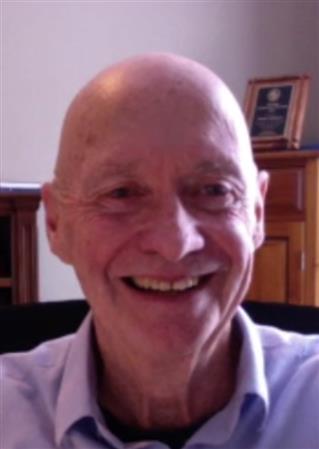
Frank Adamson, the fun, fearless, fantastic District Governor in 2020-2021 has had a remarkable career from paramedic to entrepreneur and as DG he initiated the Great Lakes Watershed Cleanup, an innovative, collaborative environmental project that captured the imagination and interests of Rotary clubs internationally.
Today Frank spoke about creating new Rotary clubs – a goal of both our Youth Services and Membership committees as we look to growing overall membership in Rotary.
However, before Frank began his talk, he presented the club with two awards: the “Lighthouse Award” for our work in 2020-21 (a District award based on successful accomplishment of a number of R.I. goals and District Goals; only 15 clubs in our district of 66 received this); and the “Polio Plus Donor Recognition Award” (for our club donation of $1750USD). Thanks to all members for their contributions.
Frank began his presentation by sharing information from D7080—a wonderfully concise description of the range of Rotary clubs that exist. In D7090 we have traditional clubs (these meet regularly, usually 1/wk.; have a formal structure; share a variety of goals). We also have 2 E-clubs, SOWNY (Southern Ontario Western New York) and RESI (Rotary E club of Social Innovators) that were chartered before COVID. And we have 8 Rotaract clubs (members under 35, often university based, but not exclusively).
There are other types of clubs in the world: these include passport clubs; corporate clubs; alumni clubs (Rotary participants - Rotary Youth Leadership Award,Youth Exchange, Global Scholars, Rotary Peace Fellows, etc.); cause based clubs and satellite clubs.
The reason for exploring the formation of another type of club is to capture a new membership demographic (25-50 yrs.) We can see from our experience that the success and survival of Rotary, like many other community-based volunteer organizations depends on its ability to renew and diversify.
The key difference between Rotaract and Satellite models appears to be in the age category, as both types of clubs can be community based and follow formats that are self-directed rather than prescribed. They are often a smaller group whereas a traditional club must have 20 members in order to qualify for a charter.
The main idea behind a Satellite or Rotaract club is to offer a flexible platform in order to attract new people to Rotary. Why? We believe that Rotary is an internationally recognized charitable organization that provides health, education, peace, sanitation and hygiene, economic development, child and maternal care, and environmental support to all people in the world regardless of political regime or religion. It is an organization worth joining. But, not everyone is able to meet every week for breakfast (lunch or dinner). So how does Rotary become invitational?
Frank focused on creating satellite clubs. He had several examples of successes so far in our district. Two of these are in the Buffalo area. Buffalo East and Buffalo West. PDG’s Bob Artis and Kevin Crosby have been instrumental in shepherding these diverse groups who have each coalesced around a particular interest and a desire for service.
A satellite club needs 8 members to start and may include members from the traditional club it is linked to. There is no President but there is a Chair who sits on the Board of Directors of the home club. It has its own treasurer and fundraisers. When a satellite reaches 20 members it may form its own club. Unlike Rotaract members, Satellite Rotarians pay the same dues to RI and the District as traditional members.
Frank hopes that for areas such as Thorold and Paris where there are currently no Rotary clubs a satellite club might be a good option. He celebrated that Niagara Falls Sunrise has just chartered a satellite club. Nancy, as Director of Youth Services, has been working with her committee and Frank to determine which would be better for DVSRC to pursue: a Rotaract or Satellite.
Denise has been searching for existing tools in R.I. to help the YS committee craft a survey for the community. She recognizes the value of the organization but also commented that there were real barriers. Frank encouraged them to continue recruitment and suggested a single focus, such as the environment, might prove attractive. He also suggested that both Bob Morrow and DG Anne Bermingham are excellent resources in creating community surveys. Bob acknowledged that we need to know what the community has, what it needs, and what it will support in order to make a good decision. Clearly, we are in a work in progress, but we may end with exciting and fruitful results.